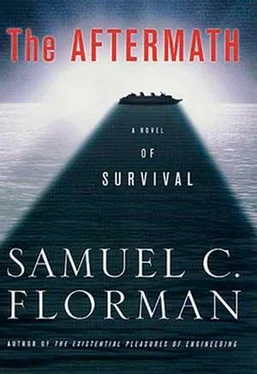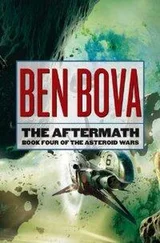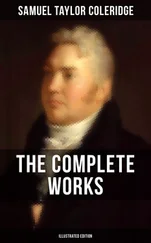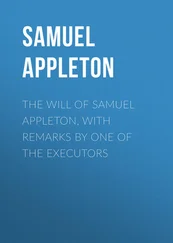Samuel Florman - The Aftermath
Здесь есть возможность читать онлайн «Samuel Florman - The Aftermath» весь текст электронной книги совершенно бесплатно (целиком полную версию без сокращений). В некоторых случаях можно слушать аудио, скачать через торрент в формате fb2 и присутствует краткое содержание. Город: New York, Год выпуска: 2001, ISBN: 2001, Издательство: Thomas Dunne books, Жанр: sf_postapocalyptic, на английском языке. Описание произведения, (предисловие) а так же отзывы посетителей доступны на портале библиотеки ЛибКат.
- Название:The Aftermath
- Автор:
- Издательство:Thomas Dunne books
- Жанр:
- Год:2001
- Город:New York
- ISBN:0-312-26652-9
- Рейтинг книги:5 / 5. Голосов: 1
-
Избранное:Добавить в избранное
- Отзывы:
-
Ваша оценка:
- 100
- 1
- 2
- 3
- 4
- 5
The Aftermath: краткое содержание, описание и аннотация
Предлагаем к чтению аннотацию, описание, краткое содержание или предисловие (зависит от того, что написал сам автор книги «The Aftermath»). Если вы не нашли необходимую информацию о книге — напишите в комментариях, мы постараемся отыскать её.
The Aftermath — читать онлайн бесплатно полную книгу (весь текст) целиком
Ниже представлен текст книги, разбитый по страницам. Система сохранения места последней прочитанной страницы, позволяет с удобством читать онлайн бесплатно книгу «The Aftermath», без необходимости каждый раз заново искать на чём Вы остановились. Поставьте закладку, и сможете в любой момент перейти на страницу, на которой закончили чтение.
Интервал:
Закладка:
So, by spinning a wire cage (called a rotor) inside of a magnetized casing (called a stator), we manufacture electricity. All we need is the power for twirling. This can come from a hand-operated crank, or more usefully, from turbines turned by falling water or by jets of steam. The steam, of course, can be obtained by burning coal or oil, or whatever.
We can then run the manufactured electricity—the magical flow of electrons—through wires and use it for lighting, or, among other things, to run motors. A motor is practically the same thing as a generator, except instead of spinning the rotor to make electricity, electricity is used to spin the rotor. It’s all so simple, in concept, anyhow.
The design of actual machines, of course, is not at all simple. Shortly after Faraday’s discovery of electromagnetic induction in 1831, a number of technologists started to fabricate small hand-operated generators. But it was not until 1873 that the Belgian engineer Zenobe Theophile Gramme built the first truly commercial electric machine. The alternating current motor of Nikola Tesla, which set the standard for worldwide use of electric power, was patented in 1888. What Tesla designed—and others after him—we can duplicate here in Engineering Village. As soon, of course, as we get Ruffin and his cohorts some copper wire.
While large-scale generation of electricity was being developed, other geniuses were gaining access to an even more wondrous mystery of the universe: electromagnetic waves that travel through space. Through space!
In the early 1860s, James Clerk Maxwell, a Scottish physicist, looked at the electricity-magnetism phenomenon from a new perspective. Since these two forces seem to create and modify each other, back and forth, over and over again—electricity makes magnetism, magnetism makes electricity—in an unending mutual propagation, one could perhaps infer that a wave was involved. After all, what is a wave but something that goes up and down, back and forth, over and over again? Maxwell theorized that when electrical oscillations are created, this generates waves: waves that travel through space. Not electrons moving through wires, but electromagnetic waves moving through space! It’s difficult to grasp the concept, and we really can’t come up with a satisfactory physical representation of these things. But the fact is that Maxwell developed mathematical formulas predicting the behavior of such waves, and these formulas were born out by experiment.
Physical confirmation of theoretical concepts was some time in coming. Maxwell published his wave theory in 1864, and it wasn’t until 1888 that Heinrich Hertz proved that electromagnetic waves actually did exist. He showed that they could be made in a laboratory, transmitted through the air, and received by an “antenna.” This was truly the greatest magic act of all time.
Using high-voltage electricity—which by this time could readily be produced—he created a spark between two coils. A few feet away, he set up a receiving mechanism consisting of two rods with a spark gap between them. As Hertz had hoped, the waves created by the first spark were detected, as evidenced by a spark appearing in the second gap.
The rest, as we never tire of saying, is history. Once it was shown that electromagnetic waves could be generated by mechanical means, and transmitted through space, it was only a question of time before the few feet became a few hundred feet, a few thousand, a few hundred thousand. In 1901, Marconi sent a radio signal across the Atlantic Ocean.
While sending and receiving these waves across long distances is marvelous, the question of utility arises. If all you can send is a spark, or a blip, you’re restricted to a Morse Code-type communique. On the other hand, if you can imprint lots of information on your wave—it’s called modulation—then you’ve done something very, very special.
This is what electronics engineers have been working on for the past hundred years, first with vacuum tubes, then with transistors and minuscule integrated circuits. Maxwell’s electromagnetic waves, imprinted with enormous amounts of information—speech, music, pictures—are generated, transmitted, received, unscrambled, and amplified. The result has been a cornucopia of fabulous products—radio, television, cellular telephones, whatever your heart desires, and more.
Isaac Newton said that if he could see farther than others it was because he stood on the shoulders of giants. Just so should we here in Engineering Village pay homage to the giants who preceded us: Volta, Faraday, Maxwell, Hertz, Tesla, Marconi, and many others. I fancy, not that our engineers stand on their shoulders, but rather that these great men were advance members of our surviving party, scouts who landed on the beach before we arrived, planting their banners in the sand, claiming the land on behalf of a renewed high civilization.
When later that evening I shared some of these thoughts with my Focus Group friends, they were far from overwhelmed. “It’s just physics,” Roxy said. “Let’s not get carried away.”
“Gimme a break,” I protested, “I’m not talking about the ultimate meaning of life. I’m referring to a magnificent human achievement. I’m celebrating the genius and insight that enables us to do the most extraordinarily wonderful things.”
“Like snoop on our neighbors,” Herb said.
“And make atom bombs,” Roxy said.
Tom threw up his hands. “What’s with you guys all of a sudden?” he fumed. “I thought you had a sense of respect for the natural world.”
“Oh, I don’t know,” said Roxy. “All those invisible rays. I suddenly feel like we’re drowning in them.”
Tom turned to me: “You may have to fine-tune your presentation, Wil. I don’t think you’re getting through to this audience the way you had hoped.”
I grimaced and shook my head until Mary came to my defense.
“This is God’s universe,” she said. “Without agitated atoms emitting electromagnetic radiation, there would be no plants, no life, no anything. The fact that we’ve come to understand something about these phenomena—and to use them to good effect—that’s cause for pride and humility and veneration.”
Herb and Roxy leaned forward and seemed to be composing their retorts when Sarah held up her hand and, like a kindergarten teacher faced with an unruly class, called “time-out.” Then she said, “I don’t think we need to be arguing about this. There are plenty of ways in which we can relate to the universe, and let’s agree that in such matters it’s each to his own. As for me, I find consolation—and inspiration—in art.”
Then, turning toward me, she added, “And in love.”
“And,” Mary said, “in faith.”
“And”—now it was Tom joining in—“I would say, creative work.”
“And in fun,” Roxy said, her spirits rising.
“And in debunking whatever and whomever we please,” Herb said, pugnacious but smiling.
It was my turn to say something, but there seemed nothing left to say. Then, suddenly, a thought came to me, fleeting and more mysterious in origin than the electromagnetic waves we had been considering. I heard myself say: “And in marrying and having children.”
That ended the evening’s debate.
12
It was well past midnight when Wil Hardy was roused unceremoniously and ordered to report to a special, secret meeting called by the Coordinating Committee. Secret? This was a first. By a firm consensus, both Inlanders and Outlanders had agreed that, although not every meeting would be open to everyone, there would be no secret committees formed or secret decisions taken by anyone in a position of authority—ever. So, this development was alarming to Wilson Hardy, Jr., and he would be sure to speak to his father about it at the earliest opportunity. Meanwhile, he was gripped by nervous excitement as he threw on some clothes, assured the half-asleep Sarah that he would be back shortly, and ran off into the night.
Читать дальшеИнтервал:
Закладка:
Похожие книги на «The Aftermath»
Представляем Вашему вниманию похожие книги на «The Aftermath» списком для выбора. Мы отобрали схожую по названию и смыслу литературу в надежде предоставить читателям больше вариантов отыскать новые, интересные, ещё непрочитанные произведения.
Обсуждение, отзывы о книге «The Aftermath» и просто собственные мнения читателей. Оставьте ваши комментарии, напишите, что Вы думаете о произведении, его смысле или главных героях. Укажите что конкретно понравилось, а что нет, и почему Вы так считаете.












